

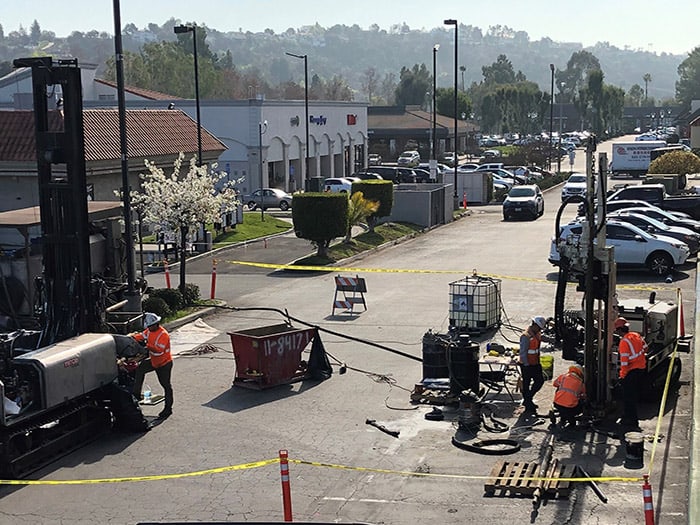
Introduction
Contamination at thousands of shopping centers across California from previous business operations presents problems for property owners who wish to continue commercial use, redevelop, and maintain property value. Commercial property remediation targets returning these buildings and land to predevelopment conditions, presenting opportunities for reuse and redevelopment.
One property owner discovered that securing adequate funding and working closely with state and regional regulatory agencies leads to success despite changing regulations and oversimplifying regulatory health risk assessment methods. The Draft Cal-EPA Supplemental Vapor Intrusion Guidance (DSVIG) suggests changes to the methods in which vapor phase transport and potential health risks are modeled and calculated for occupants of buildings with known soil or groundwater contamination beneath them. These changes, the result of a multi-year working group collaboration, recommend an arguably more conservative calculation of indoor air quality. The changes rely on EPA work and guidance, with empirically derived attenuation factors (AFs), which will increase the number of sites requiring additional environmental assessment and mitigation to achieve health risk standards. Although the DSVIG is currently draft guidance, there is evidence that regional regulatory agencies have already adopted AFs in calculating indoor air quality.
Diamond Bar Commercial Center Assessment and Mitigation
Drucker Survivors Trust owns and operates a multi-tenant commercial building in Diamond Bar, California, including a dry cleaner at one time. The former cleaners caused an unauthorized release of dry cleaning solvent containing chlorinated volatile organic compounds to the subsurface during its operation.
Financing for this all too common situation requires environmental due diligence in the form of research commonly completed in a Phase I Environmental Site Assessment followed by an assessment to characterize potential liabilities associated with chlorinated solvent releases before lenders provide funding.
Regulatory oversight in California can either be voluntarily engaged or involuntarily if assessment activities on an adjacent or nearby property indicate the presence of chlorinated volatile organic compounds in the subsurface linked to dry cleaning operations in the vicinity.
The Drucker Survivors Trust sought approval from the applicable regulatory agency, Los Angeles Regional Water Quality Control Board (LARWQCB), to assess and mitigate the chlorinated solvent release to ensure the protection of human health and reduce environmental liabilities associated with the property.
Regulatory closure is the acceptance of assessment and remediation activities by the governing regulatory entity to bring the site into compliance. Compliance, in this case, required assessment and mitigation of beneficial use groundwater underlying the property impacted by the solvent release and completing soil vapor assessment and health risk screening calculations under current state and federal guidelines.
Guidance on vapor assessment and associated health risk screening methods have changed rapidly in California state environmental regulations. As environmental engineers and consultants, SCS professionals manage an extensive list of vapor assessment, health risk assessment, and vapor intrusion mitigation projects resolving these vapor–related issues.
To start this project, the SCS team prepared a successful grant application securing more than $650,000 in funding from the California State Water Resources Control Board’s Site Cleanup Subaccount Program (SB 445, established in 2014). This state-provided grant money enables the assessment and mitigation necessary to close with the LARWQCB.
Subsurface assessment activities defined the extent and scale of chlorinated solvent impacts to soil vapor, soil, and groundwater, enabling the design of a remediation program. To reduce the groundwater contamination to cleanup levels set by the LARWQCB, SCS Engineers designed and implemented an injection program to deliver engineered chemicals directly to the groundwater plume. The injected chemicals destroy the chlorinated solvents via in situ chemical reduction and stimulation of biological degradation.
While challenging drilling conditions precluded previous consultants from attempting groundwater remediation, SCS industry experts safely achieved up to a 99 percent concentration reduction within the groundwater plume. SCS designed a soil vapor assessment that relied more on site-specific data collection and less on conservative default assumptions while conforming to the most current regulatory guidance targeted at minimal impact on the building tenants.
SCS managed all aspects of the project, including grant requirements and communication between the client, regional and state water board staff, city staff, and subcontractors. Obtaining and managing entrance under state waste discharge requirements is necessary, and SCS completed all necessary permitting and reporting requirements to facilitate the groundwater mitigation activities. Careful planning and experience with similar projects minimized impacts on tenants and kept the project on a strict timeline with no missed regulatory deadlines. SCS continues working with the LARWQCB to conclude the client’s final closure requirements and is in the process of applying for an additional $900,000 in SCAP funding to implement the final stages of the project targeted at obtaining final regulatory closure.
Changes Coming to Regulatory Guidance
Recent changes to regulatory guidance in California are arguably making obtaining closure on sites with vapor intrusion health risk concerns more difficult to achieve. The Draft Cal-EPA Supplemental Vapor Intrusion Guidance (DSVIG) suggests changes to the methods in which vapor phase transport and potential health risks are modeled and calculated for occupants of buildings with known soil or groundwater contamination beneath them. These changes, which result from a multi-year working group collaboration, recommend a more extensive and site-specific data collection effort. They include indoor air quality calculation methods relying on EPA work and guidance and empirically derived attenuation factors (AFs) which some would argue lead to overestimating potential health risks.
The consequences of the DSVIG are potentially significant if adopted as is and appear likely to result in more sites being “screened in” with vapor intrusion issues and more sites requiring mitigation. The impact, resultant costs, and possibly detrimental secondary effects such as decreases in affordable housing production, particularly in urban infill areas. And while none would argue with appropriate protection of health risk, the question is whether the studies and empirical data used to support the DSVIG represents the best available science and is truly representative and predictive of risk.
The DSVIG adopts an attenuation rate of 0.03 for the flux of both soil and sub-slab vapor to indoor air based on a previous 2012 EPA Study comprised of empirical data collected from buildings arguably not representative of modern construction in California.
The development of a reliable screening level attenuation factor for California based on high-quality, recent, California-specific data:
1) Will be protective of human health, as no toxicological imperative or basis supports a call for accelerated or immediate action (as evidenced by the fact that the DSVIG workgroup commenced its work in 2014 and issued the review draft in 2020).
2) Will ensure California’s environmental policy satisfies the gold standard for data quality and insightful analysis in which the state once took pride.
3) Will not unnecessarily decimate the California housing development market. The empirically derived screening level AF in the DSVIG is overly conservative based on the available data. More accurate empirical data and measurement methods for site-specific measurement are available.
With respect, oversimplifying the VI health risk assessment methods has constrained the environmental community’s ability to apply science-based health risk screenings, often resulting in costs associated with additional environmental assessment and mitigation. An additional revision to the DSVIG to utilize a screening level AF more reflective of the current California data and building specifications could save state resources, increase infill development by reducing urban sprawl, promote housing development, all while protecting human health.
![]() About the Author: Keith Etchells is a professional geologist and hydrogeologist with over two decades of experience assisting clients in managing environmental risks associated with ownership, transfer, or operation of commercial, industrial, and waste disposal properties. His particular technical expertise involves aspects of groundwater science and engineering relevant to contaminated sites and landfills, including supervision and conduct of subsurface data acquisition, remedial design and implementation, conceptual site model development, aquifer testing, extraction well design, groundwater quality evaluation and treatment, vapor intrusion health risk assessment and mitigation, predictive modeling, and contaminated soil and groundwater remediation design.
About the Author: Keith Etchells is a professional geologist and hydrogeologist with over two decades of experience assisting clients in managing environmental risks associated with ownership, transfer, or operation of commercial, industrial, and waste disposal properties. His particular technical expertise involves aspects of groundwater science and engineering relevant to contaminated sites and landfills, including supervision and conduct of subsurface data acquisition, remedial design and implementation, conceptual site model development, aquifer testing, extraction well design, groundwater quality evaluation and treatment, vapor intrusion health risk assessment and mitigation, predictive modeling, and contaminated soil and groundwater remediation design.
He is responsible for designing analytical, geotechnical, and hydrogeological data collection programs to complete subsurface assessment and remediation. He has prepared subsurface assessment documents, property mitigation plans, vapor intrusion risk assessment documents, soil management plans, aquifer characterization documents, conceptual site models, and groundwater remedial design and implementation documents.
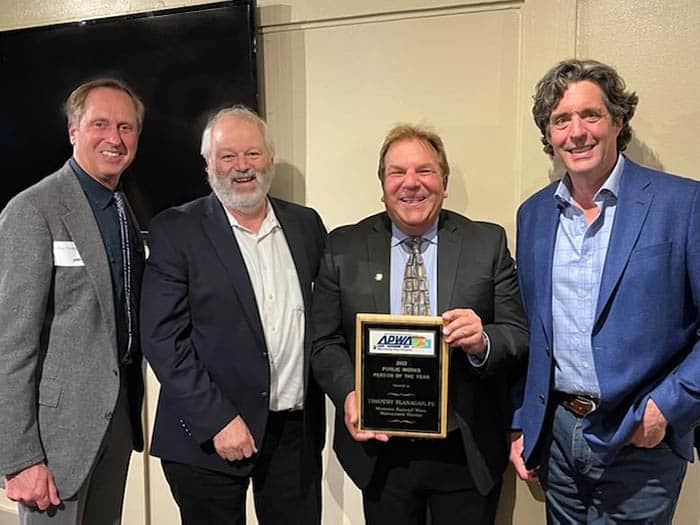
The Monterey Bay Chapter of the American Public Works Association (APWA) showed their appreciation of Tim Flanagan’s work at its General Meeting this week. The APWA’s Awards Committee and Board of Directors recognized Tim for his involvement with an extensive range of public works projects that greatly influence the community and continue positively impacting the environment.
Philip Edwards, Award Director, wrote in a letter to Tim, “Your support over the years of the Monterey Bay Chapter of APWA has been especially commendable and appreciated. We are pleased to recognize your outstanding work.”
Flanagan recognized the value of sustainable waste management long before others in the industry and played a key role in developing a pilot anaerobic digestion facility, which processes food waste and other organics into energy. This facility was the first in California to process organics from the municipal solid waste stream.
As the General Manager of the Monterey Regional Waste Management District (MRWMD), he acted as a leader in sustainable solid waste management and resource recovery. The Solid Waste Association of North America recognizes his work and the MRWMD as one of the “Best Solid Waste Systems in North America.”
In 2021, Flanagan initiated the partnership with the Veteran’s Transition Center of Monterey County with The Last Chance Mercantile. This public/non-profit partnership that Flanagan helped create has the benefit of providing stable jobs for our Veterans in transition and the reuse of recovered items instead of landfilling them.
Tim Flanagan continues making significant contributions in North America and globally. He does so as an SCS employee-owner. The award-winning environmental consulting and engineering firm has a history of innovation – a perfect fit for Tim to continue advancing programs in the region and across the U.S.
SCS Engineers Senior Vice President Michelle Leonard said, “This is the expert you want advising you on how to collect, transport, valorize, recover, and reuse various types of waste in a manner that does not jeopardize the environment, human health, or future generations.”

Application Process for $275M in California Grants Opened Jan. 31
A couple of months ago, I wrote about the opportunities and challenges of getting brownfields back into productive use. There are certainly viable strategies for remediation of contaminated property that will make them safe for a range of developments. Of course, the cleanup costs are a significant factor in any project analysis. But the state of California is providing some assistance that could make more brownfield sites pencil out for redevelopment.
I am happy to report in this article that the passage of SB 158 by the California legislature provides $500 million in cleanup funding for brownfields. Approximately $270 million of that total is targeted for grants.
The California Department of Toxic Substance Control (DTSC) administers the Equitable Community Revitalization Grants funded through SB 158. On January 31 of this year, the DTSC started accepting full applications for these grants. The application window closes on April 4, 2022, with award announcements expected on May 31, 2022.
The DTSC gives the highest priority for grants in disadvantaged communities with significant housing needs.
$270 million is a big investment. The USEPA has a similar program, with typical funding for the entire country, of less than $100 million (https://www.epa.gov/newsreleases/epa-announces-selection-151-communities-receive-665-million-brownfields-assessment-and). Since DTSC started accepting applications at the end of January, nonprofits, public agencies, municipalities, tribes, and private developers must act quickly.
Eligible entities may apply for ECRG grants for properties they own or control in high poverty areas with a CalEnviroScreen score of 75 percent or more for reuse. DTSC will also accept applications outside of the CalEnviroScreen score of 75%+ if the proposed reuse provides significant community benefit.
As I outlined in my previous article, it is important to have a risk management strategy that includes a thorough understanding of the environmental issues on the site and how those issues can impact your redevelopment plans and bottom line. Environmental and legal support experienced in identifying, anticipating, and managing risks on brownfields is critical to success.
There are an estimated 200,000 brownfields currently identified in California, many of which are useful for housing after remediation. Many of these sites are in the urban core and perfectly fit infill strategies for solving the housing crisis by reducing commute times and related greenhouse gases.
An example of such a project is COMM22 in San Diego, developed by BRIDGE Housing, in which SCS provided environmental oversight during remediation. COMM22 is a mixed-use, mixed-income, transit-oriented development located at Commercial and 22nd streets in San Diego.
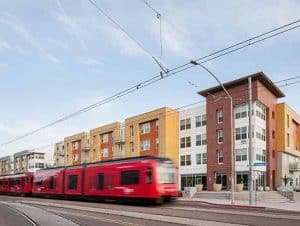
The site where COMM22 stands today was a former San Diego Unified School District vehicle maintenance and general maintenance facility. The site included leaking underground storage tanks and fill soils containing various metals, including lead.
After successful remediation, the parcel today hosts 211 affordable housing units, including apartments for low-income seniors (including HUD-subsidized units), supportive housing for youth transitioning out of the foster care system, and eleven townhomes for low- and moderate-income families.
Many more badly needed projects, like COMM22, could become a reality thanks to SB 158. If you have a brownfield in mind that fits the criteria or have questions about the grant application process, contact the Center for Creative Land Reuse (www.cclr.org). CCLR partners with the DTSC to give free assistance in applying for funding.
 About the Author: Luke Montague is a Vice President of SCS Engineers and a Project Director. He is a Professional Geologist and licensed contractor with nearly two decades of experience in environmental consulting, general contracting, commercial and residential development, and property and asset management. He has performed and reviewed over 500 Phase I environmental site assessments (ESAs) and has completed subsurface investigations, human health risk assessments, removal action work plans, site remediation activities, geotechnical investigations, asbestos and lead-based paint surveys, and asbestos air monitoring.
About the Author: Luke Montague is a Vice President of SCS Engineers and a Project Director. He is a Professional Geologist and licensed contractor with nearly two decades of experience in environmental consulting, general contracting, commercial and residential development, and property and asset management. He has performed and reviewed over 500 Phase I environmental site assessments (ESAs) and has completed subsurface investigations, human health risk assessments, removal action work plans, site remediation activities, geotechnical investigations, asbestos and lead-based paint surveys, and asbestos air monitoring.
Learn more about funding and land remediation here.
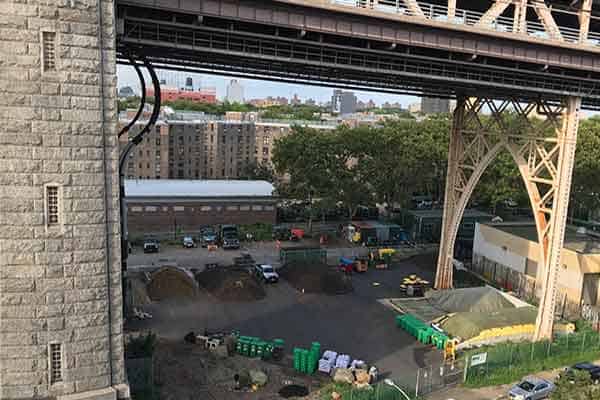
Managing hefty organic waste streams and associated costs while reaching lofty sustainability goals are among urban jurisdictions’ toughest pursuits. Some municipal solid waste operators set up local compost sites to help achieve these ambitions. They are finding other benefits along the way—from new, valuable products with a strong, local market to a way to cut out multiple complex steps involved in sending compost out of town. They are regenerating depleted soils, and some are bringing their shuttered landfills back to life with another purpose: home to these new facilities.
But how do you make compost projects work with residential neighborhoods and businesses close by, limited space that’s at a premium, and other challenges of high-density urban and suburban communities?
An urban compost success story.
The answer varies depending on each jurisdiction’s special needs and characteristics. New York City is one example of a compelling metropolitan success story, with over 200 drop-off sites and seven community-scale compost programs or facilities across its five boroughs.
SCS Engineers’ Vice President Greg McCarron helped design two of that flourishing city’s facilities, including a layout and design overhaul of one of them, located near Manhattan. The project goal was multifold: keep pace with the growing demand for finished compost and food scraps management and do it within a compact facility footprint –one-third of an acre.
Known as the Queensbridge project, it operates under the Queensboro bridge, next to six-story residential towers, a hotel, and other commercial development. So, maintaining tight odor control is a paramount priority. It’s a job that takes technical skills mastery and a robust design; the facility can process up to 1,000 tons of rapidly decomposing food scraps a year, which are mixed with leaves and woodchips.
GORE cover for odor control and process control.
“The proximity to a dense residential neighborhood allows little tolerance for issues such as odors, pests, and dust, and we designed the site with this in mind.
One of our most important strategies was to install a second SG/GORE cover [there was already one in operation]. It’s an in-vessel system with a semipermeable membrane, so it traps odors and other emissions such as dust and volatile organic compounds (VOCs) and prevents pest issues by encapsulating all fresh food scraps,” McCarron says.
The technology also sheds rainwater as clean water and provides process control, enabling a higher throughput on a smaller footprint.
Designing an efficient stormwater management system is a critical part of the plan, entailing site grading and installing drainage pipes. The team ensures the collection of contact water that touches the initial compost piles via an in-ground trenching system, which also delivers air to the composting process. Contact water is recycled back into the composting process.
Stormwater control features prevent run-on to the facility site. And clean stormwater is routed away from the in-process compost material.
Another situation called for special attention: existing utilities nearby, including high-voltage electric lines and high-pressure natural gas lines.
“It required due diligence to ensure the facility’s infrastructure would not disrupt the utilities’ operations. We looked at site surveys, prepared design drawings, and dug construction test pits to make sure we would not run into these large lines during installation of the below-grade components of the aerated static pile system,” McCarron says.
Between these build and design strategies and other tweaks, Queensbridge has continued to grow its operations while melding with the active, surrounding community. The outcome? Doubled processing capacity and improvements to access and overall workflow while managing contact water and stormwater in a better manner.
SCS Senior Project Professional Ryan Duckett finds municipalities like the control they gain when they opt to run their own facilities rather than transfer their organic waste long distances. Some haul these heavy, wet loads more than an hour away, and common organic waste hauling methods can be inefficient on a pound-for-pound basis. Besides having tighter reins on monetary and time investments, their local governing authority can allow easier rezoning of parcels or other changes to permit new activity.
Aerated static piles for faster throughput.
For composters in more densely populated areas such as urban municipalities, Duckett typically suggests bunker aerated static piles (ASP), which involve mechanically pushing or pulling air through organic waste.
“Aerated static piles have faster throughput than some other methods because you run blowers, so you constantly inject air, which speeds decomposition. In urban areas with limited real estate, accelerating production in a controlled manner is important. It’s how you scale and produce a quality product with what land resources you have,” he says.
Though having small, narrowly spaced parcels can actually facilitate economies of scale when it comes to residential collections. With hundreds to thousands of households in close proximity, the process tends to be quicker per customer and more efficient.
Still, collections are typically the most expensive part of the compost equation, so Duckett does feasibility studies to model the costs and benefits of different approaches to recover organic waste.
“If you include food scraps, you have to consider whether you want curbside or front door collections or if you prefer drop-off sites, keeping in mind that a third bin at each home will add expense. Some municipalities add a fee,” he says.
Space can be an issue; not all urban and suburban communities feel that they have enough room for another bin. Sometimes the answer is to collect food scraps from porches in buckets, though it can be more time-consuming and labor-intensive than curbside.
Operational considerations span more than identifying the best collection approaches.
“For example, sometimes in our evaluations, we find efficiencies through methods to accomplish more than one function in one stroke, perhaps co-shredding leaves and branches at the same time. Or using compostable bags instead of plastic ones that require a separate debagging operation.
Or we may make suggestions around the deployment of equipment, sometimes replacing a truck or tractor tow-behind compost turner method with a self-propelled windrow turner. It’s a one-time investment that could save time and money in the long run,” Duckett says.
Early planning is a consistent theme.
Preliminary work should include market research to identify the quality and quantity of available feedstocks. And it should involve stakeholder engagement with potential feedstock suppliers, haulers, city departments, and citizens.
“You must make sure everyone is on board because there are a lot of considerations, such as estimating the participation rate to design the size and type of processing facility. Mitigating contamination also takes forethought. It’s a big issue in the compost world.
Among Duckett’s recommendations to deter contamination from the start is implementing a ban on plastics mixed with yard waste. And setting up to provide paper in lieu of plastic bags for collecting materials, as plastics are a big problem for composters.
Duckett does site visits before going into design mode in keeping with the mantra of planning ahead. He’s looking from a technical lens for details to address to circumvent barriers later.
“One issue we give special thought to is that there are a lot of rules around buffers. Buffers could be from schools, playgrounds, adjacent residents, or water bodies, among community resources. We have to keep in mind that these are not potentially usable areas when planning the layout and design. So, we look at available space after accounting for them,” he says.
There are also rules around the proximity of compost pads to water tables, so the team is heedful of groundwater fluctuations. As important are soil characteristic studies to determine if pad construction will require outside soil or a different pad type. And key to the design process is evaluating stormwater management systems, as McCarron exemplifies with the Queensbridge project.
The considerations are vast, with no single right answer, but quite a few options exist to make composting work well in highly populated spaces. Regardless of the circumstances, local composting can provide burgeoning communities a viable, sometimes profitable, way to manage what typically is at least 30 to 40% of their waste stream. And keeping the processing site at home, close to the generator, comes with multiple benefits beyond.
 Mr. McCarron, PE, is a Vice President of SCS Engineers and our National Expert on Organics Management. He has nearly 35 years of progressively responsible experience in solid waste management, including waste composition studies, solid waste planning, composting, recycling, transfer stations, waste-to-energy systems, landfill design, and landfill gas systems. His expertise is in the design, permit, construction, and operation of compost systems and facilities for public and private clients.
Mr. McCarron, PE, is a Vice President of SCS Engineers and our National Expert on Organics Management. He has nearly 35 years of progressively responsible experience in solid waste management, including waste composition studies, solid waste planning, composting, recycling, transfer stations, waste-to-energy systems, landfill design, and landfill gas systems. His expertise is in the design, permit, construction, and operation of compost systems and facilities for public and private clients.
Ryan Duckett, PE, is a Senior Project Professional experienced in solid waste research and consulting. He serves as a project engineer for a variety of design projects, financial analyses, feasibility studies, and overall planning efforts in support of solid waste assets such as collection, transfer stations, recycling facilities, and landfills. He is a Professional Engineer licensed in Virginia and North Carolina and has a BS in Environmental Engineering and an MBA.
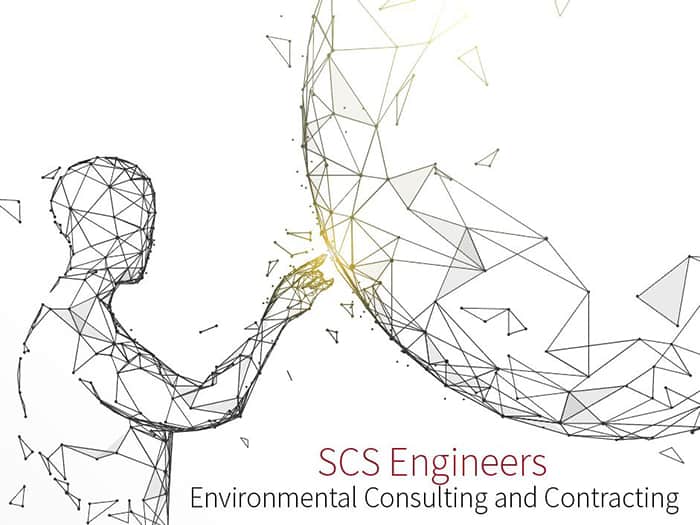
Environmental industry leader
At SCS Engineers, we empower you with skills, experience, and energy to make a difference every day. As an employee-owned engineering consulting and contracting firm, we’re driven by a purpose to protect the air, water, and soil. We’ve been at the forefront of sustainable environmental solutions for more than 50 years.
Employee-owned
As an employee-owner, you help make our business better and build wealth for your retirement. Through our Employee Stock Ownership Plan (ESOP), you’ll gain a financial stake in the business without investing your own money. When the business performs well, so does the value of your shares.
Supporting your career growth
Continual learning and innovation are fundamental to our business. We support skill development, license, and professional certification. There’s always room to grow when you’re ready to take your career to the next level.
Recognized for excellence
Our professionals are on the front line delivering engineering services for public and private sector customers. We’ve built deep bench strength, and the company is continually ranked nationally as a research and technology innovation leader.
Exceptional benefits
In addition to our collaborative culture and employee ownership, we offer outstanding benefits to support our employees’ well-being, financial health, and wellness. Our Student Debt Employer Contribution benefit helps pay off college loans faster.
SCS Engineers is an EOE/V/D Employer
Become one of the engineers, consultants, scientists, and technicians that help private and public entities run cleaner and more efficiently. A very rewarding place to have a career!
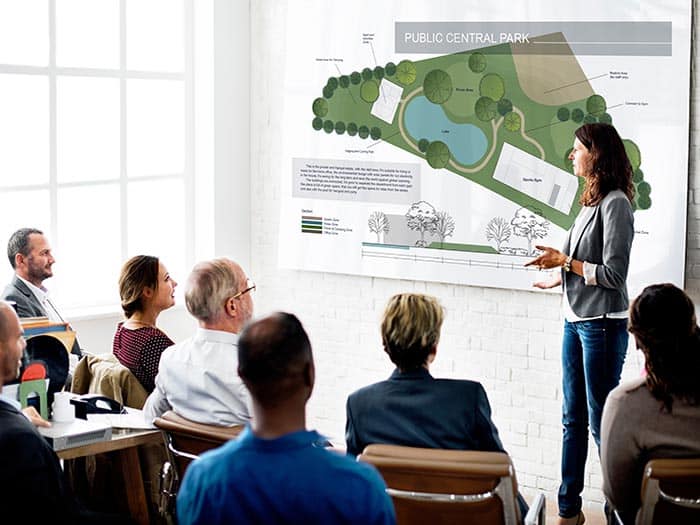
SCS’s Mike Miller explains the impact of the new ASTM E1527-21 Due Diligence Standard. Mike covers the history, CERCLA, defenses, and the changes impacting due diligence in the new Standard in this video. Watch it here. Use chapters in the timeline to jump from topic to topic at these start points:
Learn more about Environmental Due Diligence and All Appropriate Inquiries, and meet Mike Miller, SCS’s National Expert. Today’s commercial real estate transactions must take environmental issues into consideration. Complex laws can impose significant environmental liabilities on purchasers, sellers, and lenders, whether or not they caused the problem, and whether or not they still own the property. Environmental Engineers can help protect you and your investment.

Recent changes to regulatory guidance in California are arguably making obtaining closure on sites with vapor intrusion health risk concerns more difficult to achieve. The Draft Cal-EPA Supplemental Vapor Intrusion Guidance (DSVIG) suggests changes to the methods in which vapor phase transport and potential health risks are modeled and calculated for occupants of buildings with known soil or groundwater contamination beneath them. These changes, which result from a multi-year working group collaboration, recommend a more extensive and site-specific data collection effort. They include indoor air quality calculation methods relying on EPA work and guidance and empirically derived attenuation factors (AFs) which some would argue lead to overestimating potential health risks.
The consequences of the DSVIG are potentially significant if adopted as is and appear likely to result in more sites being “screened in” with vapor intrusion issues and more sites requiring mitigation. The impact, resultant costs, and possibly detrimental secondary effects include decreases in affordable housing production, particularly in urban infill areas. And while none would argue with appropriate protection of health risk, the question is whether the studies and empirical data used to support the DSVIG represents the best available science and is truly representative and predictive of risk.
The DSVIG adopts an attenuation rate of 0.03 for the flux of both soil and sub-slab vapor to indoor air based on a previous 2012 EPA Study comprised of empirical data collected from buildings arguably not representative of modern construction in California. The development of a reliable screening level attenuation factor for California based on high-quality, recent, California-specific data:
1) Will be protective of human health, as no toxicological imperative or basis supports a call for accelerated or immediate action (as evidenced by the fact that the DSVIG workgroup commenced its work in 2014 and issued the review draft in 2020).
2) Will ensure California’s environmental policy satisfies the gold standard for data quality and insightful analysis in which the state once took pride.
3) Will not unnecessarily decimate the California housing development market. The empirically derived screening level AF in the DSVIG is overly conservative based on the available data. More accurate empirical data and measurement methods for site-specific measurement are available.
Oversimplifying the VI health risk assessment methods has constrained the environmental community’s ability to apply science-based health risk screenings, often resulting in costs associated with additional environmental assessment and mitigation. An additional revision to the DSVIG to utilize a screening level AF more reflective of the current California data and building specifications could save state resources, increase infill development by reducing urban sprawl, promote housing development, all while protecting human health.
Take a deeper dive into this topic in the Daily Transcript article Vapor intrusion rules hamper infill projects.
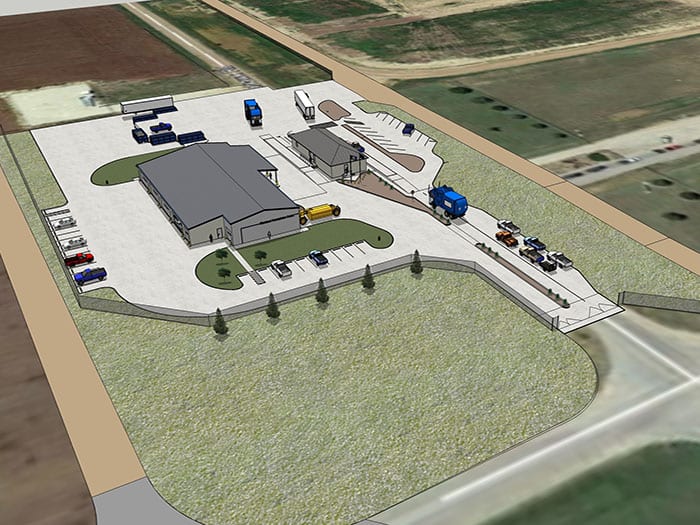
The Reno County Board of Commissioners approved contracting with SCS Engineers to support the County’s Solid Waste Department through 2024. SCS will provide environmental engineering, consulting, and field services for the Reno County Municipal Solid Waste Facilities for the next three years. The contract approval directly resulted from the firm’s experience, expertise, and long-standing relationship with Reno County.
SCS has a history of providing compliance, planning, and engineering services to Reno County. The firm helps the County continually comply with the Kansas Department of Health and Environment (KDHE) and other agency regulations. Compliance activities throughout the year include groundwater and leachate sampling, laboratory analyses, permit renewals, air permitting, and associated report preparation in accordance with Kansas Administrative Regulations.
Landfills contain complex systems to protect the health of nearby communities and the environment. The County uses SCS professionals’ expertise and proprietary software for air quality and gas collection and control systems (GCCS) operations, monitoring, and maintenance (OMM). Reno County relies on SCS to maintain these systems and keep them in compliance to focus on their other operations.
These preventative services keep the landfills fully compliant with state and federal regulatory requirements while aligned with the County’s system performance goals and anticipated operational and maintenance activities.
In 2021 the U.S. Environmental Protection Agency (EPA) changed legislation regulating landfills, specifically the New Source Performance Standards (NSPS) and other air quality regulations. These changes significantly increased the monitoring, record-keeping, data management, and reporting tasks for many landfills across the nation, including the Reno County Facility. SCS has helped Reno County navigate these changes and will continue to facilitate changes as the County looks to expand its landfill in the future. Combined with the supply chain and labor shortages, the Solid Waste Department is securing its essential services from disruptions.

Project Director Steve Linehan said, “SCS is privileged that Reno County entrusts us to partner with them to maintain the landfills’ safe and efficient operations. The Solid Waste Department supports the citizens and the environment; we’re honored to help.”
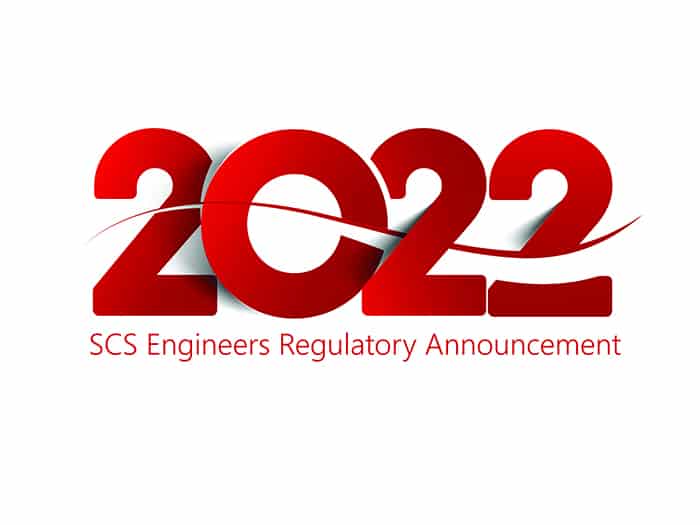
The Department of Toxic Substances Control’s Office of Brownfields’ Equitable Communities Revitalization Grant (ECRG) provides funds to incentivize cleanup and investment in disadvantaged areas of California. ECRG is setting a new path for land use that will have immediate and lasting benefits for communities, parks and green spaces, commercial enterprises, and housing.
Apply for grant funding to help Californian government units, nonprofit organizations, and Tribes assess, clean up and reuse idled and contaminated properties in the state’s environmental justice communities.
The application deadline is April 4, 2022.
Don’t miss this unique opportunity for grant assistance to clean up and revitalize our communities.

EPA Requires Reporting on Releases and Other Waste Management of Certain PFAS, Including PFBS
As part of EPA’s Strategic Roadmap, the Agency announced the automatic addition of four per- and polyfluoroalkyl substances (PFAS) to the Toxics Release Inventory (TRI) list.
As of January 1, 2022, facilities that are subject to reporting requirements for these chemicals should start tracking their activities involving these PFAS as required by Section 313 of the Emergency Planning and Community Right-to-Know Act. Reporting forms for these PFAS will be due to EPA by July 1, 2023, for the calendar year 2022 data.
In April 2021:
EPA previously updated the Code of Federal Regulations with PFAS that were added to the TRI on January 1, 2021, under section 7321(c) of the NDAA and regulated by an existing significant new use rule (SNUR) under the Toxic Substances Control Act (see 40 CFR 721.10536).
In addition to continuing to add PFAS to the TRI, the EPA will soon announce a series of PFAS test orders requiring PFAS manufacturers to provide the Agency with toxicity data and information on PFAS.
If you have questions or concerns about reporting requirements, contact one of our environmental chemistry – hazardous materials/waste professionals at .